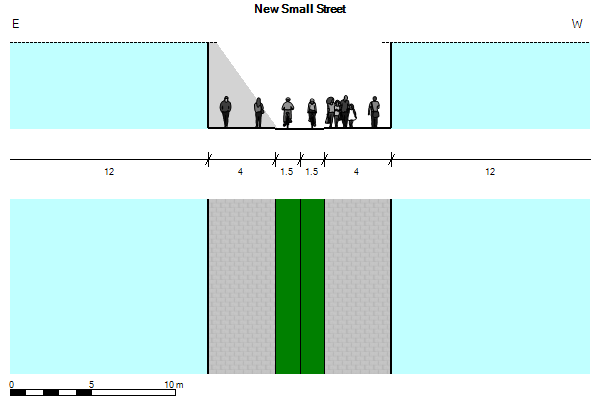In order to get better understanding while doing my explorations, I decided to relate them to the city which I am a resident from: Vancouver.
It is not a surprise that most North American city’s after the Second Industrial Revolution were modeled or adapted a more car-centric urbanism. I took Broadway as an example for this exploration.

This is a model of Broadway as it is now, with exclusive bus lanes and 4 car lanes. In the center there is another lane that serves as a left turn lane in pertinent crossings, but is removed mid block to give space for parking.
I wanted to see if with a less car-centric view I could accommodate the same traffic lanes and add space to other forms of transportation.

So, just by removing the flex space contemplated for parking/left turn lanes, it could be possible to add dedicated bike lanes protected with median strips lined with trees.
This simple exercise made me realized how much space in roads is contemplated or reserved for possible car usage.
I decided to take a width of a small residential street, which usually has little traffic and thoroughly transforming it into a pedestrian-centric road.

In this case I widened the sidewalks to allow more space for pedestrians, dispersing crowds an important trait in a socially distancing world. Local traffic or emergency/service vehicles could take up the bike lanes in case its needed.
